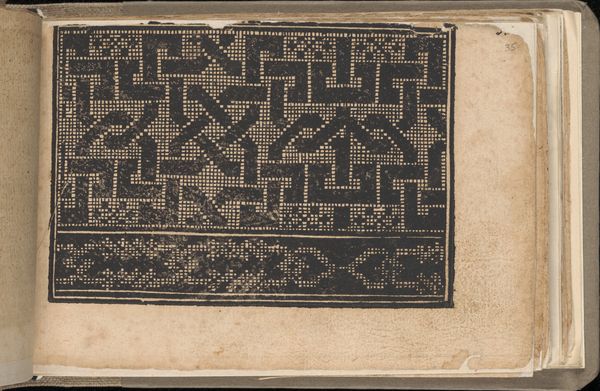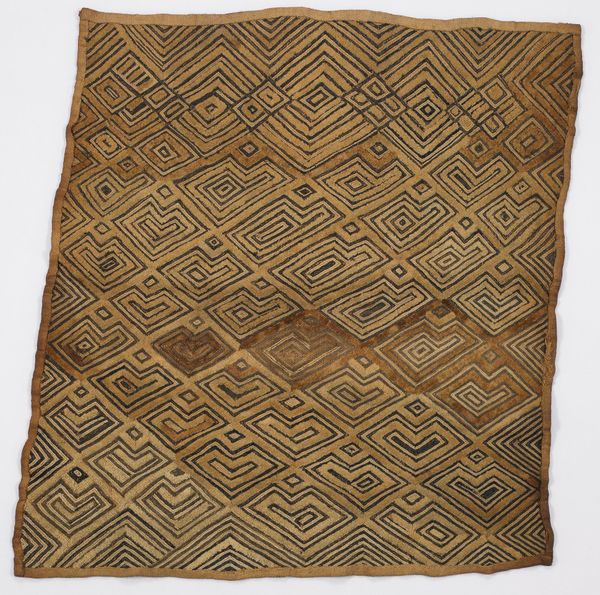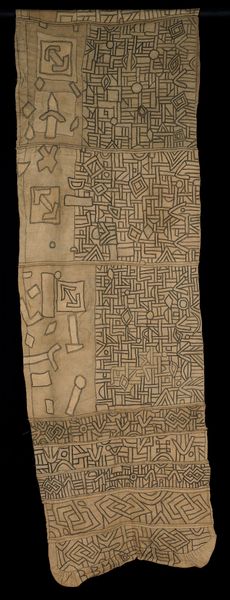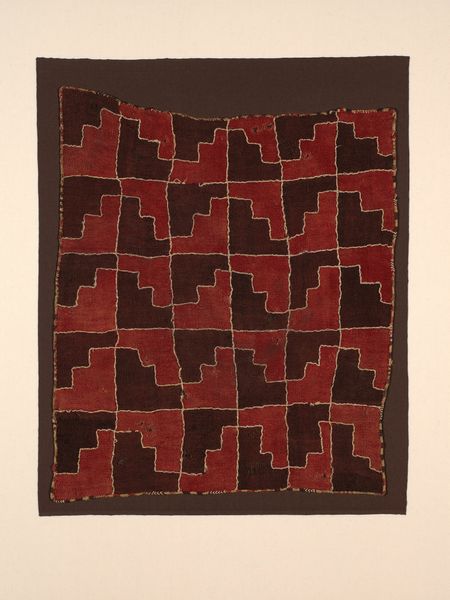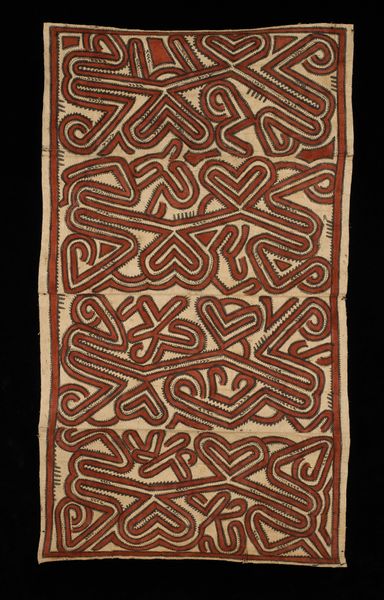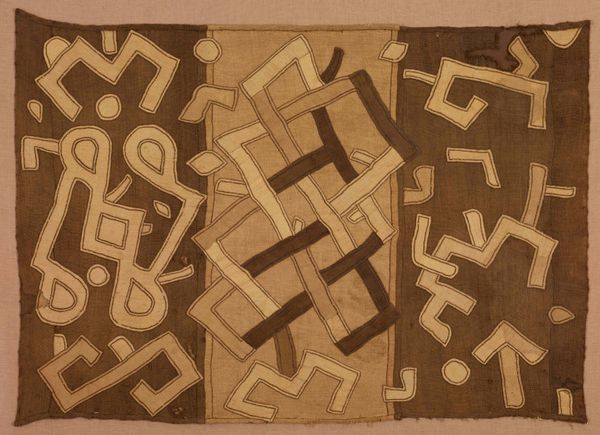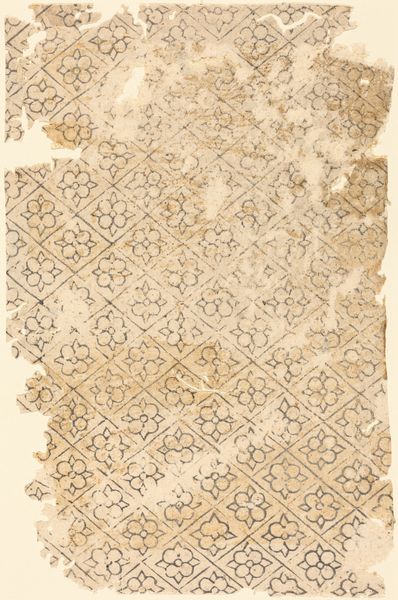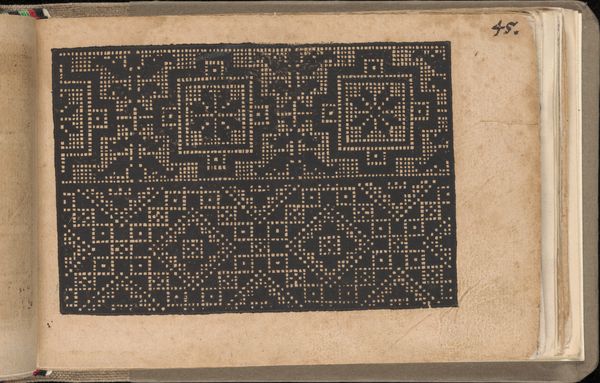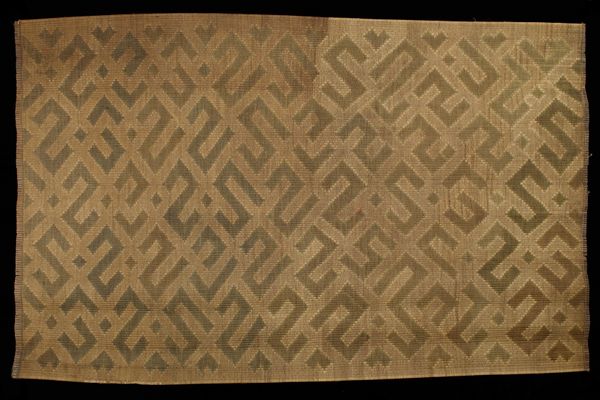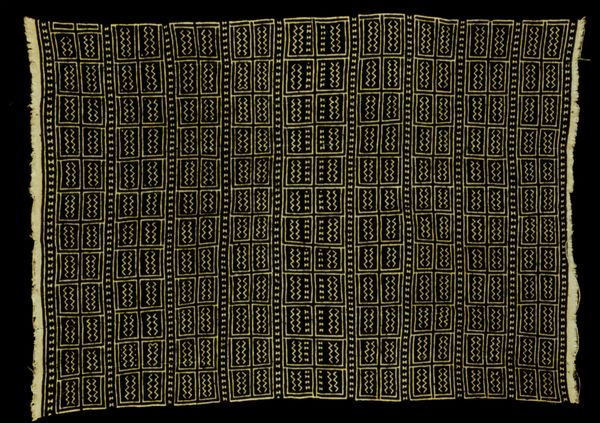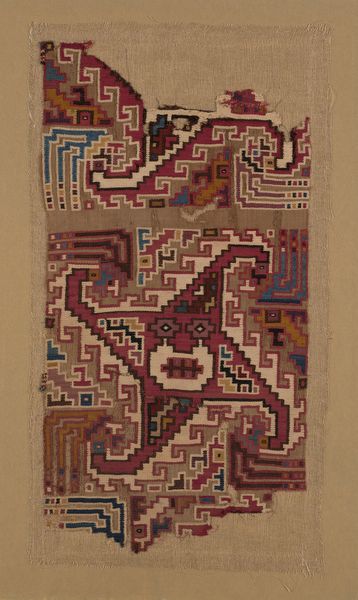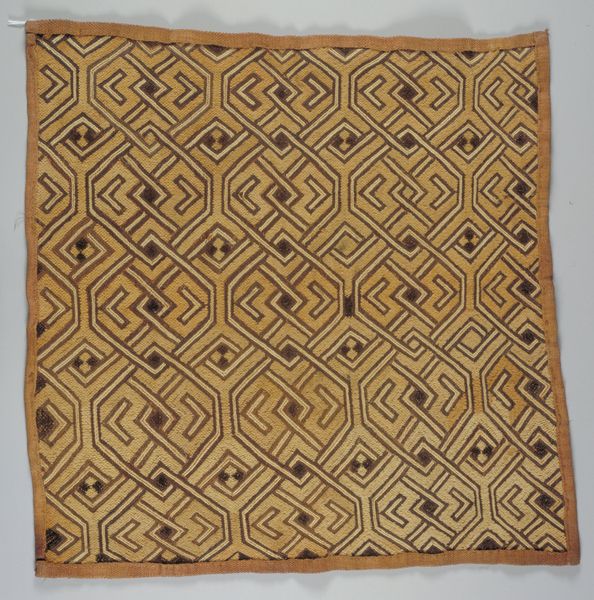
fibre-art, panel, textile
#
fibre-art
#
panel
#
textile
#
geometric
#
abstraction
Dimensions: 36 3/8 x 39 in. (92.39 x 99.06 cm)40 3/8 x 41 1/2 in. (102.55 x 105.41 cm) (mount)
Copyright: Public Domain
Curator: Stepping up to this striking fiber art panel, I immediately notice the intricate network of lines and geometric forms. Editor: It feels both chaotic and rigidly organized at once. The pale tones are soothing, but the density of the pattern makes my eyes jump all over the place. Curator: What you are seeing is a "Panel" of fibre-art from the Kuba people, dating from the mid-20th century. Its origins speak volumes about the artistry, community, and purpose surrounding textiles, highlighting how the process of creation connects makers to a legacy of both artistry and cultural identity. The material aspects—the dyes used, the fibers sourced—tell tales of local ecologies. Editor: Looking closer, I see a complex play between the background and the darker lines of its structural organization. Those diamonds in particular pull my focus. Is it just the lines, or is there a slight variation in texture contributing to how I see them? Curator: It is important to understand that these textiles serve important social and symbolic functions within Kuba society. The geometric patterns aren't merely decorative; they often convey complex cultural narratives, proverbs, and historical references, reflecting the layered values and beliefs woven into daily Kuba life. It represents a convergence of individual artistic expression with deeply entrenched social meaning. Editor: While knowing the symbolic content would add to my understanding, I am enjoying how it communicates an underlying rhythm, creating dynamic interest by contrasting horizontal and vertical lines. The formal relations are key here, no? Curator: To understand this panel merely through its aesthetic is to ignore the intensive collaborative production. Many Kuba textiles involve entire communities, each member contributing distinct skill sets and labor, forming a sort of communal production. Editor: Certainly, that knowledge is incredibly useful for grounding my personal response. The interplay of what the shapes could represent and how they function together formally provides a satisfying aesthetic encounter, regardless of their creation or utility. Curator: I agree to the convergence point of utility, intention, labor, and aesthetic. Editor: Me, too. This has enriched the appreciation.
Comments
No comments
Be the first to comment and join the conversation on the ultimate creative platform.


